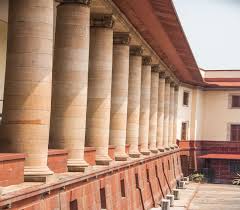(A) Constitution of India, Articles 32, 48-A and 51-A(g) – Wildlife (Protection) Act, 1972, Section 2(I), 2(5), 2(24A), 2(26), 2(36), 2(39), 18, 20A, 21, 33(a), 35, 36A, 36C, 38H , 38I, 38(O)(b), 38V(4), 38W, 38XA – Wild Life (Protection) Amendment Act, 2022 (No. 18 of 2022) – Wild Birds and Animals Protection Act, 1912 – Environment Law – Protection and improvement of environment and safeguarding of forests and wildlife – Held that, it is now an accepted social principle that all human beings have a fundamental right to a healthy environment, commensurate with their well-being, coupled with a corresponding duty of ensuring that resources are conserved and preserved in such a way that the present as well as future generations will be aware of them equally – Primary effort of the court while dealing with the environment-related issues, is to see that the enforcement agencies, whether it be the State or any other authority, take effective steps for the enforcement of the laws – Courts, in a way, act as the guardian of the people’s fundamental rights – It is not the function of the court to see the day-to-day enforcement of the law; that being the function of the Executive, but because of the non-functioning of the enforcement agencies, the courts out of necessity have had to pass orders directing the enforcement agencies to implement the law. (Para 77)
(B) Constitution of India, Articles 32, 48-A and 51-A(g) – Wildlife (Protection) Act, 1972, Section 2(I), 2(5), 2(24A), 2(26), 2(36), 2(39), 18, 20A, 21, 33(a), 35, 36A, 36C, 38H , 38I, 38(O)(b), 38V(4), 38W, 38XA – Wild Life (Protection) Amendment Act, 2022 (No. 18 of 2022) – Tiger Safaris and Zoos – Guidelines for Safari Parks which are Working either as Zoos or as Extension to Zoos, 1996’ – The definition of ‘zoo’ itself would show that it is meant to be an establishment, whether stationary or mobile, where captive animals are kept for exhibiting to the public or ex-situ conservation and include a circus and off- exhibit facilities such as rescue centres and conservation breeding centres – However, it does not include the establishment of a licensed dealer in captive animals – It could thus be seen that though a ‘zoo’ as contemplated under Chapter IVA of the WLP Act also deals with conservation, it emphasizes on ex situ conservation – Proviso to Section 33(a) of the WLP Act specifically prohibits any construction of tourist lodges, including Government lodges for commercial purposes, hotels, zoos and safari parks inside a sanctuary except with the prior approval of the National Board – It could thus be seen that, insofar as the area which is covered under a sanctuary is concerned, there will be no difficulty to hold that a safari cannot be constructed within the said area unless there is a prior approval of the National Board. (Para 79, 80)
(C) Guidelines for Normative Standards for Tourisms Activities and for Project Tiger for tiger conservation in the buffer and core areas of the tiger reserves, 2012, Clause 16.2 – Guidelines to Establish Tiger Safaris in Buffer and Fringe Areas of the Tiger Reserves, 2016, Clause 9, 10, 14 – Guidelines to establish tiger safaris in buffer and fringe areas of tiger reserves, 2019, Clause 9 – Guidelines for Preparation of Tiger Conservation Plan, 2007 – Establishment of Tiger Safari – Whether Tiger Safaris and Zoos are on the same footing or not – Held that prima facie find no infirmity in the guidelines issued by the NTCA, i.e., the 2012 Guidelines and the 2016 Guidelines for establishing the ‘Tiger Safaris’ in the buffer and fringe areas of the ‘Tiger Reserve’ -Said Guidelines emphasizes on the rehabilitation of injured tigers (after suitable treatment), conflict tigers, and orphaned tiger cubs which are unfit for rewilding and release into the wild – However, the 2019 Guidelines, departing from the aforesaid purpose, provide for sourcing of animals from zoos in the Tiger Safaris – This would be totally contrary to the purpose of the Tiger Conservation – Similarly, the vesting of final authority in the CZA and not in the NTCA, is not in tune with the emphasis on tiger conservation as provided under Chapter IVB of the WLP Act -Since undertaking of establishment of such a ‘Tiger Safari’ would be basically for the ‘in-situ’ conservation and protection of the tiger, it is the NTCA that shall have the final authority – No doubt that the CZA can be taken on board so that it can render its expertise in the management of such ‘Safaris’ – A reading of the provisions contained in the proviso to Section 33(a) and the provisions contained in the Explanation (ii) of sub-section 4 of Section 38V of the WLP Act would reveal that, although it will not be permissible to establish a ‘Tiger Safari’ in a core or critical tiger habitat area without obtaining the prior approval of the National Board, such an activity would be permissible in the buffer or peripheral area – While preparing a TCP, the State Government is required to ensure that the agricultural, livelihood, developmental, and other interests of the people living in tiger bearing forests or a tiger reserve are taken care of – Establishment of such ‘safaris’ in the buffer zone would generate employment for the local people and promote co-existence between wildlife and human activity – However, such a ‘safari’ can be established only for the purposes specified in clause 9 of the 2016 Guidelines and not as per the 2019 Guidelines. (Para 100 to 103)
(D) Guidelines to Establish Tiger Safaris in Buffer and Fringe Areas of the Tiger Reserves, 2016, Clause 10 – Establishment of a ‘Tiger Safari’ – Whether establishment of a ‘Tiger Safari’ at Pakhrau is legal or not – NTCA vide its order dated 5th June 2015, had granted an in-principal approval for establishment of the ‘Tiger Safari’ in Pakhrau – The CZA, vide order dated 12th February 2019, conveyed its approval on the conditions stipulated therein – The ‘Tiger Safari’ project, therefore, was approved by the CZA – Since at the relevant time, ‘Tiger Safari’ was considered as a ‘part forest and part non-forestry’ activity, an in-principal approval was granted by the Government of India under the Forest Conservation Act on 30th October 2020 for the Forest Clearance of 15% of the area – The Stage-I clearance was granted on 30th October 2020 and the Stage II clearance was granted on 10th September 2021 – Location of the ‘Tiger Safari’ has not been identified as per clause 10 of the 2016 Guidelines which requires recommendations of the Committee -Held that though technically there will be non-compliance with the requirement of clause 10 of the 2016 Guidelines; in fact, since most of the authorities mentioned therein are ad idem, do not wish to interfere with the decision to establish the ‘Tiger Safari’ at Pakhrau and inclined to approve the establishment of the ‘Tiger Safari’ at Pakhrau – While undertaking construction of these ‘Tiger Safaris’, the provisions of the 2016 Guidelines are scrupulously followed. (Para 104 to 115)
(E) Wildlife (Protection) Act, 1972, Section 2(I), 2(5), 2(24A), 2(26), 2(36), 2(39), 18, 20A, 21, 33(a), 35, 36A, 36C, 38H , 38I, 38(O)(b), 38V(4), 38W, 38XA – Wild Life (Protection) Amendment Act, 2022 (No. 18 of 2022) – Project Tiger – Illegal construction carried out in the Corbett Tiger Reserve and the illegal felling of trees for the said purpose- The forests of the Corbett Tiger Reserve form an essential link corridor between Corbett and Rajaji National Park through the Rawasana – Sonanadi Corridor in the Lansdowne Forest Division – List of irregularities would reveal that a vast number of illegal construction activities have been carried out – Such constructions cannot be completed overnight – Though an action has been taken in respect of certain officers of the Forest Department, prima facie many other persons must have been involved in the commission of the said irregularities – However, since the CBI is conducting the investigation as per the orders passed by the High Court, we do not propose to make any comments thereto – (Para 123)
(F) Wildlife (Protection) Act, 1972, Section 2(I), 2(5), 2(24A), 2(26), 2(36), 2(39), 18, 20A, 21, 33(a), 35, 36A, 36C, 38H , 38I, 38(O)(b), 38V(4), 38W, 38XA – Wild Life (Protection) Amendment Act, 2022 (No. 18 of 2022) –Protection of Tigers – ‘Public Trust’ Doctrine– Held that the Public Trust Doctrine primarily rests on the principle that certain resources like air, sea, waters and the forests have such a great importance to the people as a whole that it would be wholly unjustified to make them a subject of private ownership – The said resources being a gift of nature, they should be made freely available to everyone irrespective of the status in life – The doctrine enjoins upon the Government to protect the resources for the enjoyment of the general public rather than to permit their use for private ownership or commercial purposes – According to Professor Sax the Public Trust Doctrine imposes the certain restrictions on governmental authority – Executive acting under the doctrine of public trust cannot abdicate the natural resources and convert them into private ownership, or for commercial use -The aesthetic use and the pristine glory of the natural resources, the environment and the ecosystems of our country cannot be permitted to be eroded for private, commercial or any other use unless the courts find it necessary, in good faith, for the public good and in public interest to encroach upon the said resources – Held that the then Forest Minister and Mr. Kishan Chand, DFO considered them to be the law unto themselves – They have, in blatant disregard of the law and for commercial purposes, indulged in the illicit felling of trees on a mass-scale to construct buildings on the pretext of promotion of tourism – This is a classic case that shows how the politicians and the bureaucrats have thrown the public trust doctrine in the dustbin – Amazed at the audacity of the then Hon’ble Forest Minister and Mr. Kishan Chand, DFO in giving a total go-bye to the statutory provisions – However, since the matter is pending investigation by the CBI, do not propose to comment any further on the matter. (Para 134, 135 and 138)
(G) Wildlife (Protection) Act, 1972, Section 2(I), 2(5), 2(24A), 2(26), 2(36), 2(39), 18, 20A, 21, 33(a), 35, 36A, 36C, 38H , 38I, 38(O)(b), 38V(4), 38W, 38XA – Wild Life (Protection) Amendment Act, 2022 (No. 18 of 2022) – Protection of Tigers – Principle of Ecological Restitution – Convention on Biological Diversity, 1992, Article 8 clause (f) – Held that worldwide as well as in our jurisprudence, the law has developed and evolved emphasizing on the restoration of the damaged ecological system – A reversal of environmental damage in conformity with the principle under Article 8(f) of the CBD is what is required – At times, the compensatory afforestation permits forestation at some other site – However, the principle of restoration of damaged ecosystem would require the States to promote the recovery of threatened species – States would be required to take steps for the identification and effective implementation of active restoration measures that are localized to the particular ecosystem that was damaged – The focus has to be on restoration of the ecosystem as close and similar as possible to the specific one that was damaged – No doubt that the CBI is investigating the issue as to who is responsible for the same – However, the investigation by the CBI would only lead to finding out the culprits who are responsible for such huge devastation – The law will take its own course – Find that, bringing the culprits to face the proceedings is a different matter and restoration of the damage already done is a different matter – State cannot run away from its responsibilities to restore the damage done to the forest – The State, apart from preventing such acts in the future, should take immediate steps for restoration of the damage already done; undertake an exercise for determining the valuation of the damage done and recover it from the persons found responsible for causing such a damage. (Para 156 to 158)
(H) Wildlife (Protection) Act, 1972, Section 2(I), 2(5), 2(24A), 2(26), 2(36), 2(39), 18, 20A, 21, 33(a), 35, 36A, 36C, 38H , 38I, 38(O)(b), 38V(4), 38W, 38XA – Wild Life (Protection) Amendment Act, 2022 (No. 18 of 2022) – Protection of Tigers – Directions – Held that the presence of a Tiger in the forest is an indicator of the well-being of the ecosystem – Unless steps are taken for the protection of the Tigers, the ecosystem revolving around Tigers cannot be protected – The figures which are placed to show that there has been a substantial reduction in tiger poaching and an increase in the tigers’ strength throughout the country – However, that should not be enough – The ground realities cannot be denied – The events like illegal constructions and illicit felling of trees on a rampant scale like the one that happened in the Corbett National Park cannot be ignored – Steps are required to prevent this – Directions issued in the interests of justice inter alia that the Safaris which are already existing and the one under construction at Pakhrau will not be disturbed – However, insofar as the Safari at ‘Pakhrau’ is concerned, direct the State of Uttarakhand to relocate or establish a rescue centre in the vicinity of the ‘Tiger Safari’ – The directions which would be issued by this Court with regard to establishment and maintenance of the ‘Tiger Safaris’ upon receipt of the recommendations of the Committee directing to be appointed would also be applicable to the existing Safaris including the Safari to be established at Pakhrau – The MoEF&CC shall appoint a Committee of the name persons for which is to recommend on the stated issues – Certain other direction issued. (Para 159 to 161)
SUPREME COURT OF INDIA
2024 STPL(Web) 151 SC
[2024 INSC 178]
In Re: T.N. Godavarman Thirumulpad Vs. Union Of India & Ors.
Writ Petition (Civil) NO. 202 of 1995 IN I.A. NO.20650 OF 2023-Decided on 06-03-2024
https://stpllaw.in/wp-content/uploads/2024/04/2024-STPLWeb-151-SC.pdf







